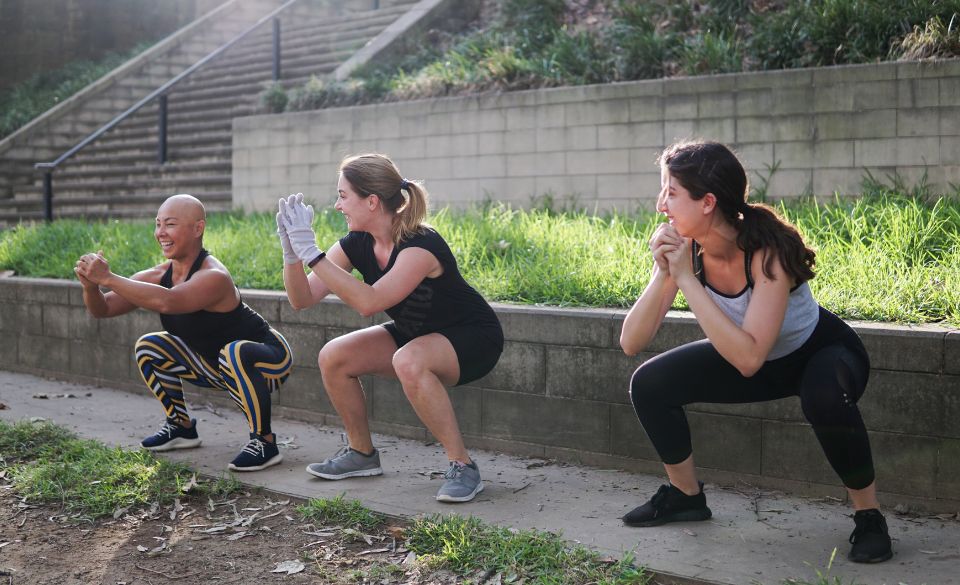
How Much Exercise Should Women Do: Finding the Right Balance
Page Contents
Exercise is an essential part of a healthy lifestyle for women, but how much exercise is too much? Overdoing it can lead to negative consequences, such as losing one’s period. In this article, we explore how much exercise women should do to achieve optimal health without sacrificing their menstrual cycle.
The Importance of Exercise for Women’s Health
Regular exercise is essential for women’s health, as it can help reduce the risk of chronic diseases such as heart disease, stroke, and diabetes. Exercise can also help manage conditions such as PCOS and endometriosis, improve bone health, and reduce the risk of breast cancer.
The American Heart Association recommends that adults engage in at least 150 minutes of moderate-intensity aerobic activity or 75 minutes of vigorous-intensity aerobic activity per week, in addition to strength training exercises at least two days per week. However, these guidelines do not account for individual factors such as age, fitness level, and health status.
The Dangers of Overexercising
Overexercising can lead to negative consequences, especially for women. One of the most significant risks of overtraining is losing one’s period, also known as amenorrhea. Amenorrhea can occur when the body is under too much physical stress, such as during intense exercise, and can have long-term health consequences.
The Female Athlete Triad is a condition that can develop in women who engage in high-intensity exercise while not consuming enough calories to support their energy needs. The triad includes amenorrhea, low energy availability, and decreased bone mineral density. Women who participate in activities that emphasize leanness, such as distance running, gymnastics, and dance, are at a higher risk of developing the Female Athlete Triad.
When women engage in high-intensity exercise or have a significant increase in their exercise regimen, their bodies can experience physical stress, which can interfere with the delicate hormonal balance needed for menstrual cycles.
Missed periods can occur due to a condition known as amenorrhea, which is the absence of menstrual periods for three or more consecutive months. Amenorrhea can be caused by a variety of factors, including weight loss, stress, and hormonal imbalances. However, one of the most common causes of amenorrhea in women who exercise excessively is known as hypothalamic amenorrhea.
Hypothalamic amenorrhea occurs when the hypothalamus, the part of the brain responsible for regulating the reproductive system, becomes suppressed due to physical stress. The hypothalamus produces hormones that regulate the menstrual cycle, including gonadotropin-releasing hormone (GnRH). When the hypothalamus is suppressed, it can decrease the production of GnRH, which can lead to missed periods.
In addition to hypothalamic amenorrhea, excessive exercise can also lead to a condition known as the Female Athlete Triad. The Female Athlete Triad is a condition that includes amenorrhea, low energy availability, and decreased bone mineral density. Women who participate in activities that emphasize leanness, such as distance running, gymnastics, and dance, are at a higher risk of developing the Female Athlete Triad.
Women who engage in high-intensity exercise or have a significant increase in their exercise regimen should pay special attention to their nutrition and ensure they are consuming enough calories to support their energy needs. It is also essential to listen to your body and recognize when you need to adjust your exercise routine. Consulting with a healthcare professional, registered dietitian, or certified personal trainer can also help you determine the appropriate amount of exercise for your individual needs.
Studies on Exercise and Women’s Health
Several studies have investigated the effects of exercise on women’s health, including the risk of losing one’s period from overexercising. One study published in the Journal of Women’s Health found that women who engaged in moderate-intensity physical activity for at least 150 minutes per week had a lower risk of developing breast cancer compared to those who were sedentary.
Another study published in the American Journal of Clinical Nutrition found that women who participated in regular physical activity had a reduced risk of developing endometrial cancer. However, the study also noted that engaging in high-intensity exercise may increase the risk of amenorrhea.
Finding the Right Balance
It is important for women to find the right balance of exercise to achieve optimal health without sacrificing their menstrual cycle. Women who participate in high-intensity exercise should pay special attention to their nutrition and ensure they are consuming enough calories to support their energy needs. It is also essential to listen to your body and recognize when you need to adjust your exercise routine.
Consulting with a healthcare professional, registered dietitian, or certified personal trainer can also help you determine the appropriate amount of exercise for your individual needs. By finding the right balance, women can reap the benefits of exercise while maintaining their menstrual cycle and overall health.
Final Words
Regular exercise is crucial for women’s health, but overdoing it can have negative consequences, such as losing one’s period. Finding the right balance of exercise and rest is essential for maintaining optimal health without sacrificing one’s menstrual cycle. By listening to your body, paying attention to nutrition, and consulting with professionals when needed, women can achieve optimal health through exercise.



